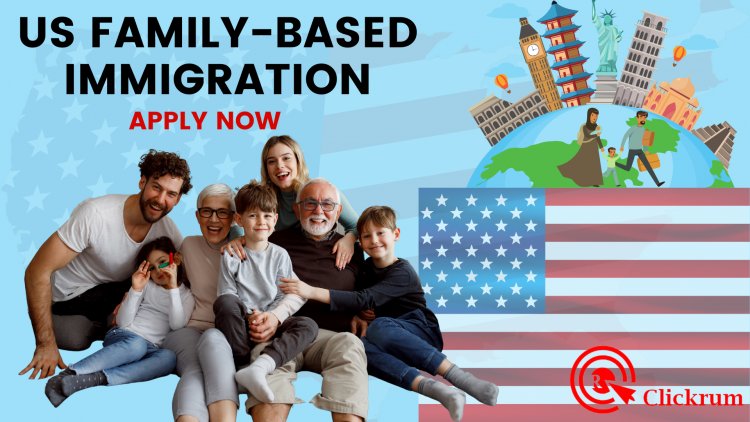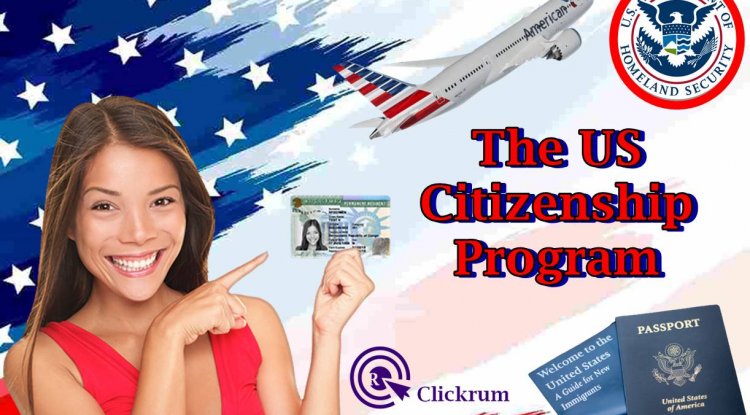How To Apply For US Family-Based Immigration program
This article focuses on the two main types of family-based immigration to the US – immediate relatives and family preference immigrants – and outlines some facts about how each type can be sponsored as well as what requirements must be met by each petitioner to ensure successful immigration.

Family-based immigration is the most common way that U.S citizens and permanent residents can sponsor family members to legally immigrate to the United States, obtaining lawful permanent residence (green card). This process usually takes place through either Immediate Relative (IR) or Family Preference (F2A/F2B) visas based on the relationship between you and your relative, which includes spouses, children, parents, and siblings. US citizens are allowed to sponsor their spouse, unmarried children under 21 years old (under 25 if they are full-time students), and parents aged 21 or older.
What Exactly is Family-Based Immigration?
Family-based immigration allows United States citizens and lawful permanent residents (LPR) to bring their family members into the country. The most common form of legal immigration, family-based immigration makes up two-thirds of immigration into the United States.
How to Apply for USA Citizenship Program: A Step-by-Step Guide
The process works by allowing citizens and LPRs to sponsor certain family members for a green card. To be eligible for a visa, you must be an immediate family member or within the family preference category of a sponsor. The entire process includes a minimum of two family members, a petitioner, and a beneficiary.
Family-Based Immigrant Visa Categories
There are two groups of family-based immigrant visa categories: Immediate Relative and Family Preference.
- Immediate Relative
- Family Preference
What is the Application Process Like?
Usually, the process starts when a petitioner files an immigration request with the U.S. government. The form they must file is called a Form I-130, Petition for Alien Relative. Once this form is approved and a visa number becomes available for the relative, then the family member is eligible to apply for a green card. Afterward, the residence is given through either consular processing or adjustment of status.
4 Steps on How to Apply for a US Family Visa
There are specific steps to follow in order for a U.S. Lawful Permanent Resident to successfully sponsor a family member. These are:
- U.S. citizen or permanent resident files visa petition
- USCIS makes a decision on the visa petition
- Family Preference relatives wait until a visa becomes available
- Immigrant applies for an immigrant visa or Green Card
Step 1: Filing the Petition
To begin the sponsorship process, the U.S. Lawful Permanent Resident family member will need to mail a visa petition on USCIS Form I-130, along with accompanying documents, to U.S. Citizenship and Immigration Services (USCIS). The LRP must prove the family relationship is real.
Step 2: USCIS Makes a Decision
Once USCIS receives the petition, the officers will consider whether to approve or deny the request. If approved, the case file will be forwarded to the National Visa Center for further processing.
The Ultimate Guide to Applying for a USA Citizenship Visa
If denied, it is possible for the petitioner to file a new petition after determining what changes need to be made to encourage approval. Upon approval, USCIS will forward the immigrant’s case file to the National Visa Center (NVC) for further processing.
Step 3: Preference Relatives Wait for Visa Availability
This step only takes place if the petitioner was in the Family Preference group. Relatives that are not considered “immediate” are not eligible for permanent residence right away, as there are annual limits on the number of Green Cards that can be approved. Thus, the immigrant joins a waiting list, and will usually wait at least a year before learning if a visa is available.
Step 4: Immigrant Applies for Visa or Green Card
If the petition has been approved, and a visa has become available, the immigrant would then submit an application for permanent residence. This is usually done by applying for an immigrant visa at a U.S. consulate outside the United States, and then once in the states, the immigrant would apply for a Green Card.
How To Apply For USA Work Visa? - The Application Process And Requirements
During the ensuing process, called “consular processing”, the immigrant will be required to fill out various forms, provide documents and take part in a medical examination.
Residency Status and Traveling Abroad
When you receive your immigrant visa, you will be a permanent resident of the United States. You will be allowed to live and work permanently in the United States. However, if you want to travel outside the United States, you must have a passport from your country of citizenship.
You should also get a Reentry Permit if you plan to be outside the United States for more than one year. If you are a permanent resident but do not have a passport from your country of citizenship, you may be able to get a Limited Validity Passport. If you want to move to another country, you will need to apply for a new immigrant visa.
Green Card Application Process
The family-based immigration process generally begins with the petitioner (U.S. citizen or lawful permanent resident) making a request to the U.S. government to allow a family member to immigrate. The petitioner files Form I-130, Petition for Alien Relative, with USCIS. The I-130 petition establishes the existence of a qualifying family relationship (within the immediate relative or family preference categories). For more details on what happens after filing the I-130 petition, view the Form I-130 processing time.
How To Apply For A Student Visa to Study in USA: Step-by-Step Guide
Once USCIS approves the I-130 petition and a visa number is available, the foreign family member may apply for a green card. There are two basic paths to apply for a green card: consular processing or adjustment of status. Consular processing is a means for applying for an immigrant visa (green card) through the U.S. embassy or consular office in a foreign country. Consular processing is the most common path to obtaining a green card.
In some cases, an immigrant that is already inside the United States as a temporary visitor (e.g. student, tourist, etc.) may be able to adjust their status to permanent resident. Adjustment of status is the process of changing immigration status to permanent residence (green card holder). Adjustment of status is only available to a small group of applicants.
Important Things to Bear in Mind
While seeking family-based immigration, there are a few key factors that are important to keep in mind:
- The sponsor must be at least 18 years old, residing in the United States, financially stable, and a U.S. citizen or LPR. If a single sponsor is unable to meet these criteria, a joint sponsor may sometimes be used.
- There is no limit on visas given to spouses, children, and parents of a sponsor. However, other family members who are under the family-preference category face limitations on visas that are given each year.
- All applicants for immigrant visas are required to go through a compulsory medical examination.
- In Need of an Immigration Lawyer?
Our team at Mouthytech Attorneys LLP understands that the immigration process is a long and daunting hurdle to overcome. Dealing with all the legal responsibility alone can take an emotional toll on a person.
FAQs
Can a U.S. Citizen Sponsor a Family Member?
If you are a U.S. Citizen, you may petition for the following relatives, as long as you can prove the relationships:
- Husband or wife;
- Unmarried children under 21 years old;
- Unmarried son or daughter over 21 years old;
- Married son or daughter of any age;
- Brother (s) or Sisters(s), if you are at least 21 years old.
- Mother or father, if you are at least 21 years old
Can a Green Card Holder Sponsor a Family Member?
If you are a lawful permanent resident (green card holder), you may petition for the following relatives, as long as you can prove the relationships:
Apply For the US Visa Lottery to Win a Chance to Get a Free USA Visa
- Husband or wife;
- Unmarried child under 21 years of age;
- Unmarried son or daughter over 21 years of age.
What Happens After You Petition for a Relative?
If your relative is already in the United States, they may apply to adjust status to become a Green Card holder (lawful permanent resident) after a visa number becomes available using Form I-485. If your relative is outside the United States, your petition will be sent to the National Visa Center (NVC).
The NVC will forward your petition to the appropriate U.S. consulate when a visa becomes available and your relative will be notified about how to proceed. This process is referred to as "consular processing."
What Relatives Can a U.S. Citizen Sponsor?
US Citizens can sponsor family members that fall under two categories: Immediate Relative or Family Preference.
Immediate Relatives include:
- spouse
- unmarried children under 21
- orphans
- parents
US Visa Everything You Need to Know
Family Preference includes:
- married and unmarried children over 21 and their children
- spouses and children of Green Card holders
- siblings, their spouses & children
Finally
The United States family-based immigration system is designed to reunite families by granting preference to close relatives of U.S. citizens and lawful permanent residents. The process, however, can be long and complex. For more information













